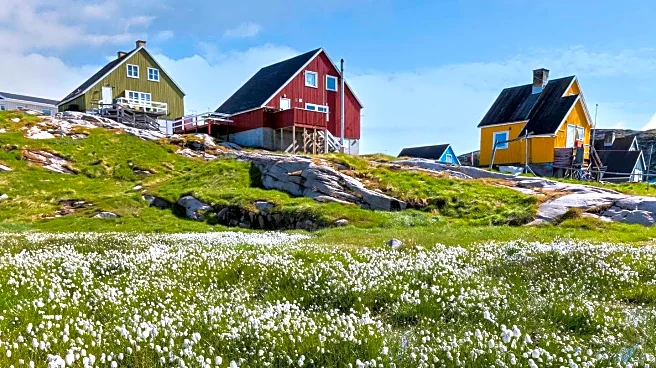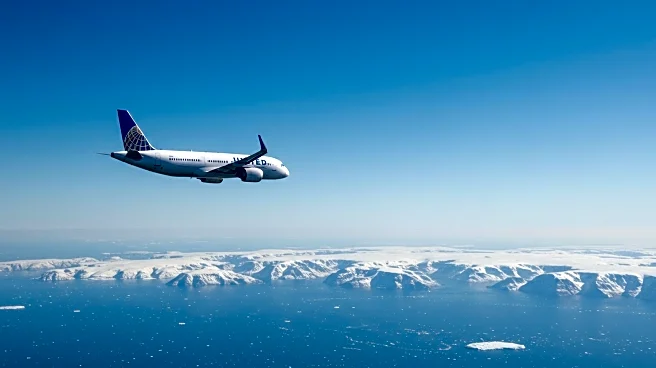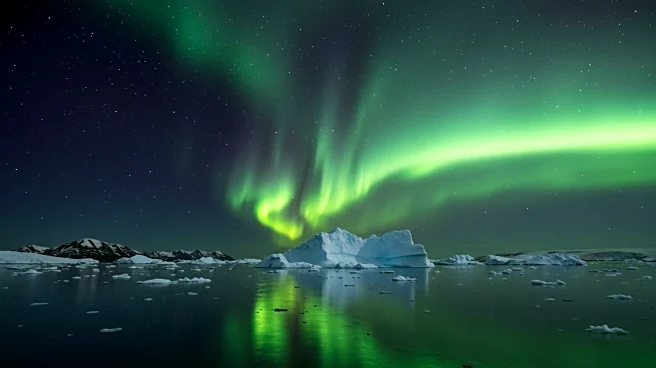What's Happening?
Greenland is experiencing a surge in tourism interest, particularly from American visitors, following the introduction of direct flights from Newark to Nuuk by United Airlines. This development marks a significant shift in Greenland's accessibility, as travelers previously had to transit through Copenhagen or Reykjavik. The new direct flights have led to increased tourist arrivals, putting pressure on Greenland's nascent tourism infrastructure. Despite the influx, the country is still adapting to this scale of tourism, as evidenced by the cancellation of a whale-watching tour due to insufficient participants. Greenland's tourism office, Visit Greenland, has outlined a 10-year plan to expand the industry responsibly, aiming to extend the tourism season and double the number of tourists by 2035. The plan includes opening additional international airports and spreading tourism beyond major cities like Nuuk and Ilulissat.
Why It's Important?
The increase in tourism to Greenland has significant implications for the country's economy and infrastructure development. As Greenland becomes more connected to the world, it opens up opportunities for local businesses and communities to benefit from international visitors. However, the rapid growth also poses challenges, such as the need for more accommodations and sustainable tourism practices. The tourism boom could lead to economic growth, but it requires careful management to avoid issues like overtourism, which has affected other destinations. The interest from American tourists also highlights Greenland's geopolitical significance, as seen in past discussions by President Trump about annexing the territory. The tourism surge could strengthen Greenland's autonomy and economic independence.
What's Next?
Greenland is planning to open two more international airports by 2026, which will further increase its capacity to handle international tourists. The country is also focusing on building new hotels to accommodate the growing number of visitors. As the tourism industry expands, stakeholders will need to address infrastructure challenges and ensure sustainable practices are in place. Airlines like United plan to continue their seasonal flights, indicating a long-term commitment to connecting Greenland with the U.S. The gradual increase in visitors will require ongoing adjustments to Greenland's tourism strategy to balance growth with environmental and cultural preservation.
Beyond the Headlines
The tourism boom in Greenland could lead to broader cultural exchanges and increased awareness of Arctic issues, such as climate change and indigenous rights. As more tourists visit, there is potential for greater international collaboration on environmental conservation and sustainable development. The influx of visitors might also influence Greenland's political landscape, as increased economic activity could bolster calls for greater autonomy or independence from Denmark. Additionally, the tourism industry could play a role in preserving Greenland's unique cultural heritage by promoting traditional practices and crafts to international audiences.











